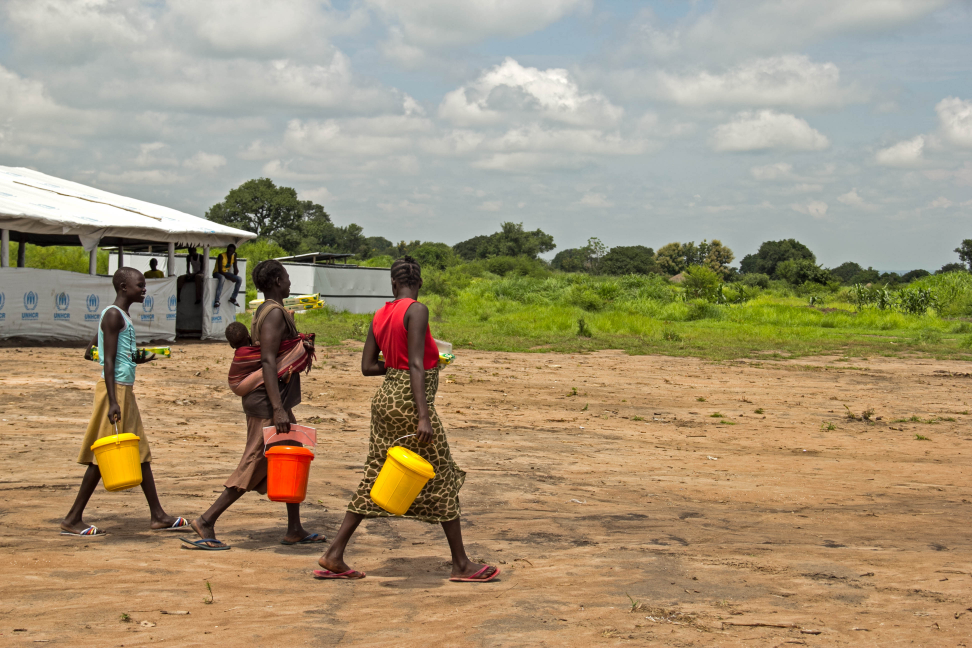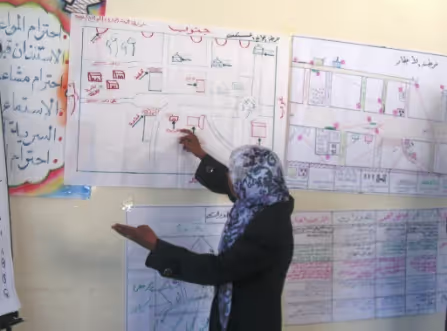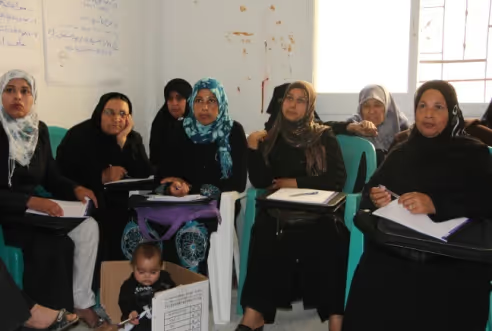Consider their differences!

Urban participants in the Gaza Strip have differences related to their unique living situation in urban conflict prone areas; differences in the prioritization of hazards, education levels, and in communities’ cultures.

Different target areas’ participants prioritized hazards differently although all of them live in conflict-prone areas. In some areas the first priority for participants is the military incursions and the need to properly respond in instances of conflict. However, for other areas, the priority is day-to-day hazards, such as car accidents, electric generators, weak infrastructure, poverty, and unemployment. Differences in education levels also affected participants’ proposed mitigation strategies to the hazards they face and the selection of the groups’ VCA tools. None of the participants identified natural disasters among their priorities during the VCA training although participants received a range of illustrative examples of hazards during the VCA, including natural disasters. Furthermore, Gaza urban communities are clearly not prepared for natural disasters. Awareness raising around natural disasters must be raised among the participants, especially since the area is susceptible to earthquakes and flooding.

Urban participants of the target areas have different cultures that dominate the social relations between families and neighbors in these areas. Some participating groups live in urban communities where social relations are strong, while other groups live in communities were social ties are tenuous. Strong relations are often found in areas of extended families. These families can help and support one another during times of crisis. Common to most target areas is that participants often have vague connections to key stakeholders with influence in their communities and surrounding areas.
Urban Challenges...
- Finding time to participate in project activities such as trainings and meetings was difficult for many GRRAM participants given their number of family and community commitments. In one instance, the project team has to postpone project activities for two weeks in order for the families to support their children during the exam period. In another instance, a meeting was postponed due to an important social event many GRRAM group participants had to attend.
- Mobility was an issue for women from more conservative families, as they had to first seek permission from their husbands to participate in an event outside of the household. The GRRAM project team remained flexible to accommodate the women’s schedules and mobility restrictions, rescheduling trainings and meetings to more convenient times and over longer periods, and holding such events in nearby facilities, or in some cases, beneficiaries’ homes.
- Despite the fact that the de-facto government is present, municipal services are weak or lacking in most of the vulnerable, conflict-affected and urban areas targeted by the GRRAM project, increasing the vulnerability of target communities and their ability to mitigate risk. The lack of municipal support in these areas is due to their susceptibility to conflict and the resultant political sensitivity of these areas. Participants reported having to travel larger distances in order to reach the nearest governmental services.
Stay updated
Sign up for our newsletter to receive regular updates on resources, news, and insights like this. Don’t miss out on important information that can help you stay informed and engaged.
Related articles
.png)


Explore Elrha
Learn more about our mission, the organisations we support, and the resources we provide to drive research and innovation in humanitarian response.